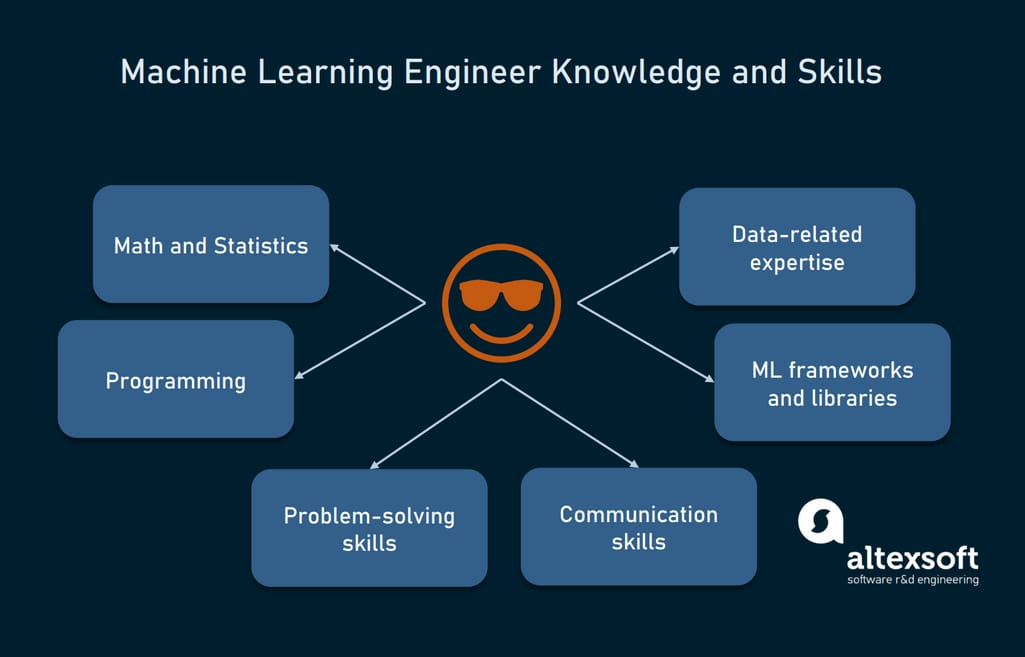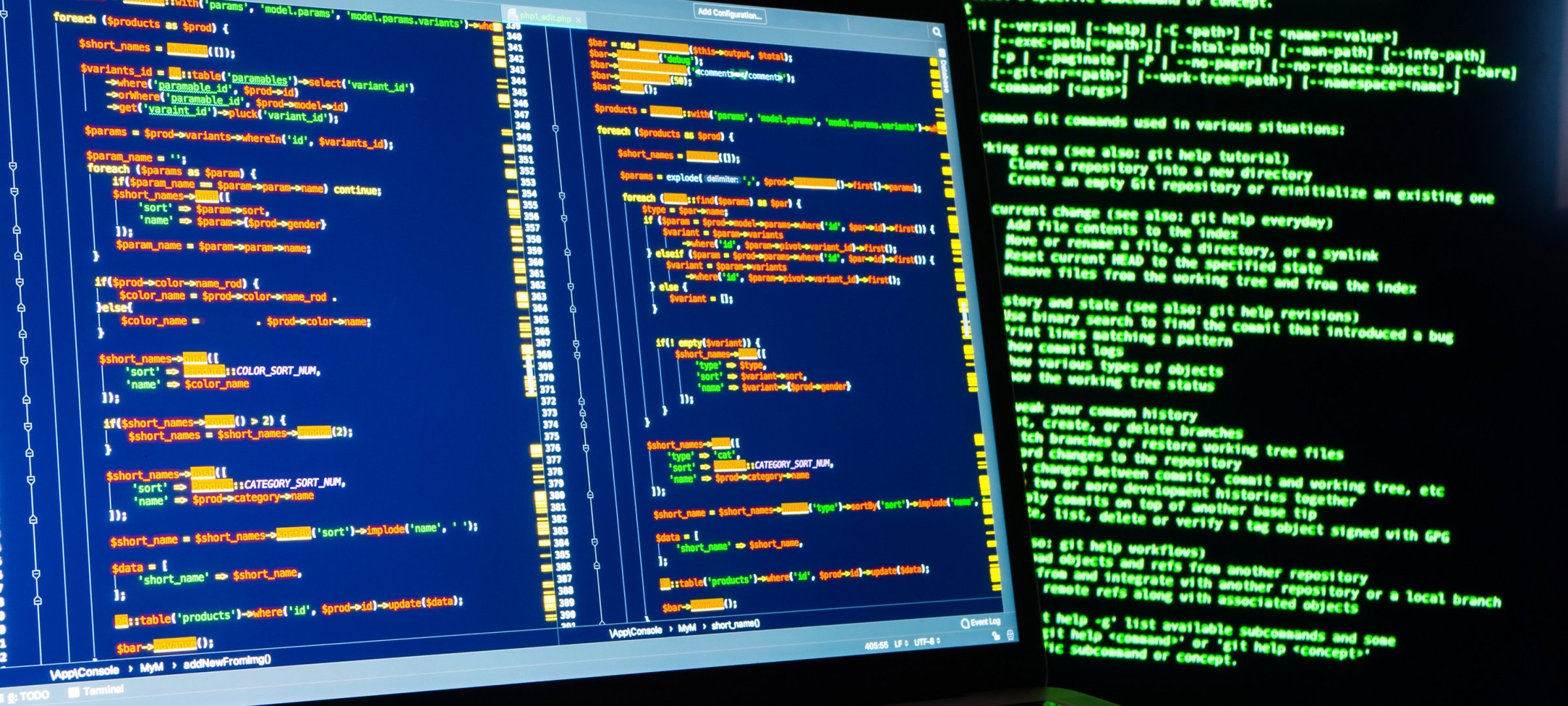All Categories
Featured
Table of Contents
- – The Buzz on Machine Learning Engineering Cours...
- – The Greatest Guide To I Want To Become A Machi...
- – Facts About Machine Learning Bootcamp: Build ...
- – How Machine Learning Crash Course For Beginne...
- – Best Online Software Engineering Courses And...
- – Practical Deep Learning For Coders - Fast.ai...
You probably know Santiago from his Twitter. On Twitter, each day, he shares a great deal of sensible features of device knowing. Many thanks, Santiago, for joining us today. Welcome. (2:39) Santiago: Thank you for welcoming me. (3:16) Alexey: Prior to we go into our primary subject of moving from software design to machine discovering, possibly we can begin with your history.
I began as a software application programmer. I went to college, got a computer technology degree, and I started developing software program. I assume it was 2015 when I made a decision to choose a Master's in computer scientific research. At that time, I had no concept regarding maker knowing. I didn't have any kind of interest in it.
I know you've been making use of the term "transitioning from software application design to artificial intelligence". I like the term "including in my skill established the artificial intelligence abilities" much more due to the fact that I assume if you're a software program engineer, you are currently giving a whole lot of worth. By incorporating device knowing currently, you're increasing the influence that you can carry the industry.
Alexey: This comes back to one of your tweets or maybe it was from your training course when you compare two approaches to understanding. In this situation, it was some issue from Kaggle concerning this Titanic dataset, and you just find out how to fix this trouble using a details tool, like choice trees from SciKit Learn.
The Buzz on Machine Learning Engineering Course For Software Engineers
You first find out mathematics, or direct algebra, calculus. When you understand the math, you go to equipment learning concept and you learn the concept.
If I have an electric outlet here that I need replacing, I don't want to most likely to university, invest 4 years understanding the math behind electrical power and the physics and all of that, just to transform an electrical outlet. I prefer to begin with the outlet and find a YouTube video clip that helps me go via the problem.
Poor example. However you understand, right? (27:22) Santiago: I actually like the concept of beginning with a trouble, attempting to throw away what I recognize as much as that trouble and understand why it doesn't function. Then get hold of the devices that I require to address that issue and begin excavating deeper and much deeper and deeper from that point on.
Alexey: Perhaps we can talk a bit concerning learning resources. You pointed out in Kaggle there is an intro tutorial, where you can get and discover how to make decision trees.
The only demand for that course is that you understand a little bit of Python. If you go to my account, the tweet that's going to be on the top, the one that claims "pinned tweet".
The Greatest Guide To I Want To Become A Machine Learning Engineer With 0 ...

Also if you're not a designer, you can begin with Python and function your method to more artificial intelligence. This roadmap is focused on Coursera, which is a system that I really, truly like. You can investigate every one of the training courses completely free or you can spend for the Coursera membership to get certifications if you desire to.
That's what I would do. Alexey: This comes back to one of your tweets or maybe it was from your training course when you compare 2 approaches to learning. One technique is the issue based method, which you just spoke about. You discover a trouble. In this situation, it was some issue from Kaggle regarding this Titanic dataset, and you simply discover exactly how to address this problem using a details tool, like choice trees from SciKit Learn.

You initially discover mathematics, or direct algebra, calculus. After that when you recognize the mathematics, you go to device understanding concept and you discover the concept. Four years later, you finally come to applications, "Okay, how do I make use of all these 4 years of math to address this Titanic trouble?" Right? In the previous, you kind of save yourself some time, I assume.
If I have an electric outlet here that I need replacing, I do not wish to go to college, invest 4 years understanding the mathematics behind electrical energy and the physics and all of that, simply to transform an outlet. I prefer to begin with the outlet and discover a YouTube video that assists me undergo the issue.
Santiago: I really like the concept of beginning with a problem, attempting to throw out what I recognize up to that issue and understand why it doesn't function. Get the devices that I require to fix that issue and begin excavating deeper and deeper and deeper from that factor on.
To make sure that's what I normally suggest. Alexey: Maybe we can talk a little bit concerning discovering sources. You mentioned in Kaggle there is an introduction tutorial, where you can obtain and discover exactly how to make decision trees. At the start, prior to we started this interview, you pointed out a couple of books too.
Facts About Machine Learning Bootcamp: Build An Ml Portfolio Revealed
The only demand for that training course is that you know a bit of Python. If you're a programmer, that's a great base. (38:48) Santiago: If you're not a programmer, after that I do have a pin on my Twitter account. If you most likely to my profile, the tweet that's going to be on the top, the one that states "pinned tweet".
Also if you're not a developer, you can begin with Python and function your method to more artificial intelligence. This roadmap is focused on Coursera, which is a system that I actually, truly like. You can audit every one of the training courses free of cost or you can spend for the Coursera registration to get certificates if you intend to.
How Machine Learning Crash Course For Beginners can Save You Time, Stress, and Money.
Alexey: This comes back to one of your tweets or perhaps it was from your training course when you compare two strategies to understanding. In this instance, it was some issue from Kaggle about this Titanic dataset, and you simply find out how to resolve this problem making use of a certain device, like choice trees from SciKit Learn.

You initially learn mathematics, or direct algebra, calculus. When you understand the mathematics, you go to maker understanding concept and you learn the concept.
If I have an electric outlet below that I require replacing, I don't want to go to university, spend 4 years comprehending the mathematics behind power and the physics and all of that, just to transform an electrical outlet. I prefer to begin with the outlet and locate a YouTube video clip that helps me experience the issue.
Santiago: I truly like the idea of starting with an issue, trying to throw out what I know up to that issue and comprehend why it doesn't function. Grab the tools that I need to fix that issue and begin digging deeper and much deeper and deeper from that point on.
To make sure that's what I typically recommend. Alexey: Perhaps we can speak a little bit concerning learning resources. You pointed out in Kaggle there is an intro tutorial, where you can get and find out how to make decision trees. At the start, prior to we started this interview, you discussed a couple of publications.
Best Online Software Engineering Courses And Programs Things To Know Before You Get This
The only need for that program is that you know a little bit of Python. If you're a programmer, that's a terrific base. (38:48) Santiago: If you're not a designer, after that I do have a pin on my Twitter account. If you go to my profile, the tweet that's mosting likely to get on the top, the one that states "pinned tweet".
Also if you're not a developer, you can start with Python and function your method to even more artificial intelligence. This roadmap is focused on Coursera, which is a platform that I actually, really like. You can investigate all of the courses completely free or you can spend for the Coursera subscription to obtain certifications if you intend to.
That's what I would do. Alexey: This comes back to among your tweets or perhaps it was from your course when you contrast two approaches to knowing. One technique is the trouble based technique, which you just spoke about. You discover a trouble. In this case, it was some problem from Kaggle concerning this Titanic dataset, and you just learn just how to resolve this trouble making use of a certain device, like choice trees from SciKit Learn.
You initially find out math, or linear algebra, calculus. When you recognize the math, you go to device learning concept and you learn the concept. 4 years later, you ultimately come to applications, "Okay, how do I use all these 4 years of mathematics to solve this Titanic issue?" ? In the former, you kind of conserve on your own some time, I assume.
Practical Deep Learning For Coders - Fast.ai - Truths
If I have an electric outlet right here that I require replacing, I don't wish to go to university, spend four years understanding the mathematics behind electrical energy and the physics and all of that, simply to transform an electrical outlet. I prefer to start with the electrical outlet and find a YouTube video that assists me experience the trouble.
Santiago: I actually like the idea of beginning with an issue, trying to toss out what I know up to that trouble and understand why it does not function. Get the devices that I require to resolve that issue and begin digging deeper and much deeper and deeper from that point on.

To make sure that's what I generally recommend. Alexey: Maybe we can chat a little bit concerning learning resources. You pointed out in Kaggle there is an introduction tutorial, where you can get and find out exactly how to choose trees. At the start, prior to we began this interview, you discussed a pair of publications too.
The only requirement for that program is that you understand a little bit of Python. If you go to my profile, the tweet that's going to be on the top, the one that says "pinned tweet".
Even if you're not a designer, you can start with Python and function your method to even more equipment knowing. This roadmap is concentrated on Coursera, which is a system that I truly, really like. You can examine all of the courses free of charge or you can spend for the Coursera registration to obtain certificates if you intend to.
Table of Contents
- – The Buzz on Machine Learning Engineering Cours...
- – The Greatest Guide To I Want To Become A Machi...
- – Facts About Machine Learning Bootcamp: Build ...
- – How Machine Learning Crash Course For Beginne...
- – Best Online Software Engineering Courses And...
- – Practical Deep Learning For Coders - Fast.ai...
Latest Posts
Software Developer Career Guide – From Interview Prep To Job Offers
The Best Youtube Channels For Coding Interview Preparation
Why Faang Companies Focus On Problem-solving Skills In Interviews
More
Latest Posts
Software Developer Career Guide – From Interview Prep To Job Offers
The Best Youtube Channels For Coding Interview Preparation
Why Faang Companies Focus On Problem-solving Skills In Interviews